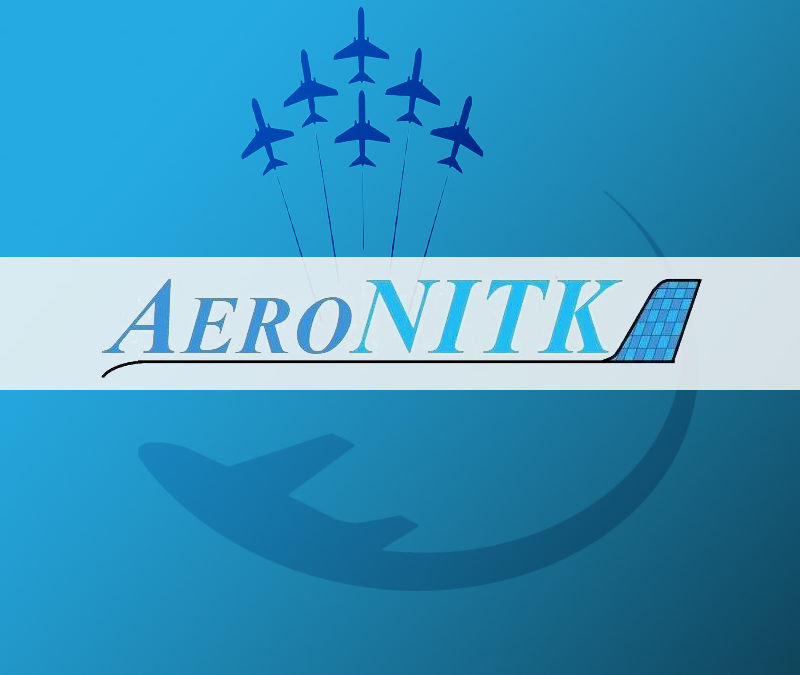Aircraft design is one of the most demanding interdisciplinary fields in modern day engineering. It blends together technical expertise from various domains of engineering, creativity and critical thinking seamlessly and demands teamwork and dedication. It also promotes the useful skill of decision making, as compromising to meet competing requirements is no easy task. It is also a domain that has been woefully underrepresented in NITK in the past.

NITK has many aerospace engineering enthusiasts. But there has never been a platform for us to be able to work on a real-world project and gain some useful practical knowledge. There was a need to go beyond simply learning the definition of lift and drag: an experimental process with an emphasis on “doing” rather than “reading”. It is to fill this void that Team AeroNITK was formed in 2018 by Pavan and Sandeep, two mechanical engineering students from the batch of 2020.

Team AeroNITK 2019-20 consists of a tight-knit group of seven undergraduate students of mechanical engineering who participate in the AIAA Undergraduate Design Competition. A Request for Proposal (RFP) is issued by the experts from industry and academia that addresses a current problem in aviation. In return, the team conceives a solution for that problem in the form of an airplane. For 2019-20’s RFP, the team designed a short-range high capacity aircraft over the course of several months, from September 2019 to May 2020, to alleviate the problem of airport congestion. Lissome 400 was the product of our tireless efforts.
The process was certainly not a straight, smooth road. There were many hurdles along the way, some anticipated and others not. Designing an aircraft involves many important aspects and requires meticulous attention to detail. Creating a solid game-plan right at the beginning and delegating the tasks and subsystems to various members of the team helped us work without feeling overwhelmed. Pavan and Sandeep displayed strong leadership qualities, helping the rest of us out at every stage. At any point, if we felt lost, there were years of empirical data handy for us to refer to, as a starting point. This project introduced us to many new software which we were able to learn, thanks to an abundance of resources on the internet. The ability to overcome every hitch through resources, lateral thinking and teamwork helped us cross the finish line.
We aim to continue the team and this process of aircraft design next year with renewed enthusiasm and dedication for the AIAA Design Competition 2020-21. The recruitment to expand the team will begin shortly, so get onboard!
It is an opportunity for undergraduate students like us to get a taste for what goes on in the nooks of aerospace giants such as Boeing and Airbus. Devising an aircraft from scratch may have seemed like a daunting task at the beginning, but after getting our hands dirty and actually accomplishing the task as a team, we are able to appreciate the invaluable knowledge we have gained. As a team, we can confidently say that we know more now about the intricate concepts and technicalities involved in aircraft design than several semesters of classroom learning.
Follow us on LinkedIn and you can reach us at lead.aeronitk@gmail.com.


